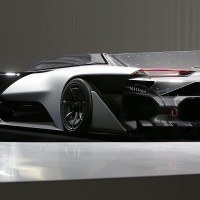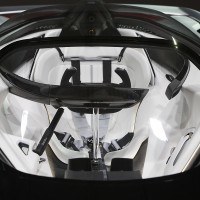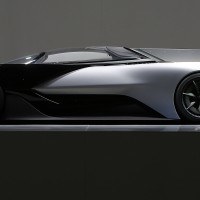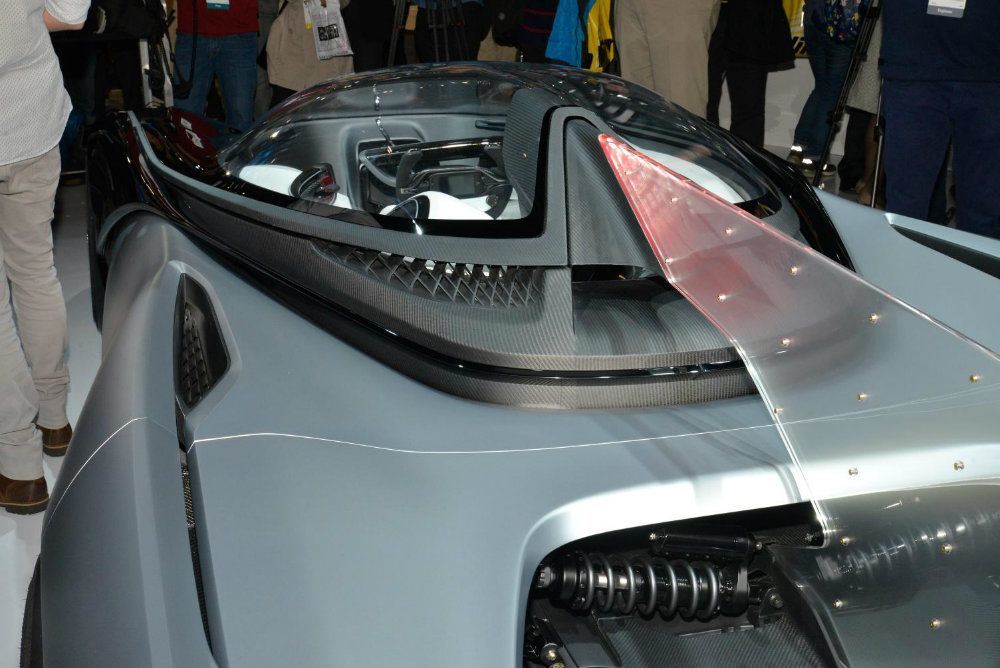Faraday Future finally stopped teasing car enthusiasts and unveiled their concept car, the FFZero1, at CES 2016. This Batmobile-esque display seemed, at first, to merely be a new toy for eccentric billionaires.
But there’s more …
The FFZero1 is not short on features that would cause the super-rich to want one on display in their homes. Beyond its futuristic design, its over-the-top specs, like 1,000 horsepower, all-wheel electric motors, 200 mph top speed, and 0-60 in 3 seconds illicit a sense that it overshot the mass market and is merely the newest version of The Homer.
However, the concept car presented will not be the car Faraday Future will be making. It was rolled out in order to capture imaginations as they revealed their true innovations. This presentation was pretty clever, considering it got everyone’s attention, but confusing because it’s not actually the car they will be producing. The very concept of the Faraday Future or FF as they like to be called is to revolutionize the way cars are built, used, and conceived of.
Taking a page from Henry Ford and modernizing it, Faraday Future wants to not only create the latest and greatest in car innovation, but in car production and the way we commute. The history of commuting has evolved in America differently than in other countries. Here, we love our cars. Subways and buses never really caught on, even though most of our cars are parked about 97% of the time. But with population growth, especially in large cities, there are issues to be addressed when everyone drives and parks, especially alone.
These issues are being researched and addressed in many ways by companies such as Uber, Lyft, GM, Google as well as Mobileye, who is working towards driverless car technology for various car companies. Faraday Futures indicates that their cars will be fully autonomous from the beginning.
Additionally, FF indicates that they want to create cars that are not sold, but shared, like a timeshare condo, however, not limited to a single car. So instead of owning a car and parking it most of the time, a person can subscribe to Faraday Future services and have a car from their fleet pick you up when you need a ride. This concept is being explored by the above mentioned companies, but what separates FF from the rest, is that their cars will be fully integrated. This means that each car will not merely have ports and adapters for electronic devices, but it will be an electronic device. When the car picks you up, it will know you based on your phone, your ride history, and thus your tendencies. Each ride will grow the algorithm that helps the cars know who you are and what you do and like. And each car will gain the knowledge and share to the fleet like a bee hive.



Although this is pretty cool, it doesn’t seem enough to distinguish this new company from the collection of others. So why does FF think they can thrust themselves into the transportation industry and succeed where so many have failed? Perhaps their biggest strength is their new approach to manufacturing. Most car companies have been making cars for many decades and have an established approach to production. This method takes years of research and development of a concept, then years of testing and tinkering before a model comes out. After years of arduous testing a paper crumpling, they can finally produce the car.
FF has abandoned these processes and considers them old fashioned. They say they can design, test, and produce a model from scratch in about two years, one third the standard time. They do this by taking advantage of two concepts: the first is that they designed a Variable Platform Architecture (VPA). This is similar to to a skateboard design, where they can easily change the size and modulate various features of the platform to accommodate different models. The FFZero1 is electric, marking it another advancement towards global sustainability, but that’s not the narrative behind the company.
These cars are powerful and innovative, and the electric model is more of a design advantage than an environmental statement. The motors are adjacent to the wheels. No intrusive drive shafts to work around. This improves the modular aspect by allowing them to lengthen or shorten the platform without major reengineering. So a single platform can be the foundation for a sedan or an SUV.
This goes hand in hand with the design of their battery pack. It is made up of smaller, modular, and removable component batteries that allow the car to expand or contract based on need and economics. The batteries can be easily swapped out to allow for newer batteries or more powerful ones to upgrade performance or distance.
The second key advantage they are claiming is that they use advanced VR (Virtual Reality) to test their vehicles. This allows the data to come in and be corrected much faster, so a car can be debugged and iterated many times, in a relatively short span, with less expense, more accuracy, and less turnaround time. This is even more aggressive than the 3D Printing of cars that other automakers do in their iterations. They simply trust that software and digital technology has advanced to a point that it can replace time consuming reality tests. Perhaps they can test drive a virtual car in the virtual snow many a thousand times before a working model is ever made.
For many, the Faraday Future FFZero1 was disappointing, because the car’s look was derivative. Meh, another Batmobile knockoff. Welcome to the long list of fancy flameouts. But the strength of this car is not in its sizzle, but in the steak. By building for the future transportation needs with flexibility and innovation, they could be onto something big.
*Jerry Mooney is a Language and Communications Professor at the College of Idaho and the author of History Yoghurt & the Moon. Follow him on Twitter: @JerryMooney
from Automoblog.net http://www.automoblog.net/2016/01/17/faraday-future/
via IFTTT
from Tumblr http://peternpalmer.tumblr.com/post/137524496846
via IFTTT

No comments:
Post a Comment